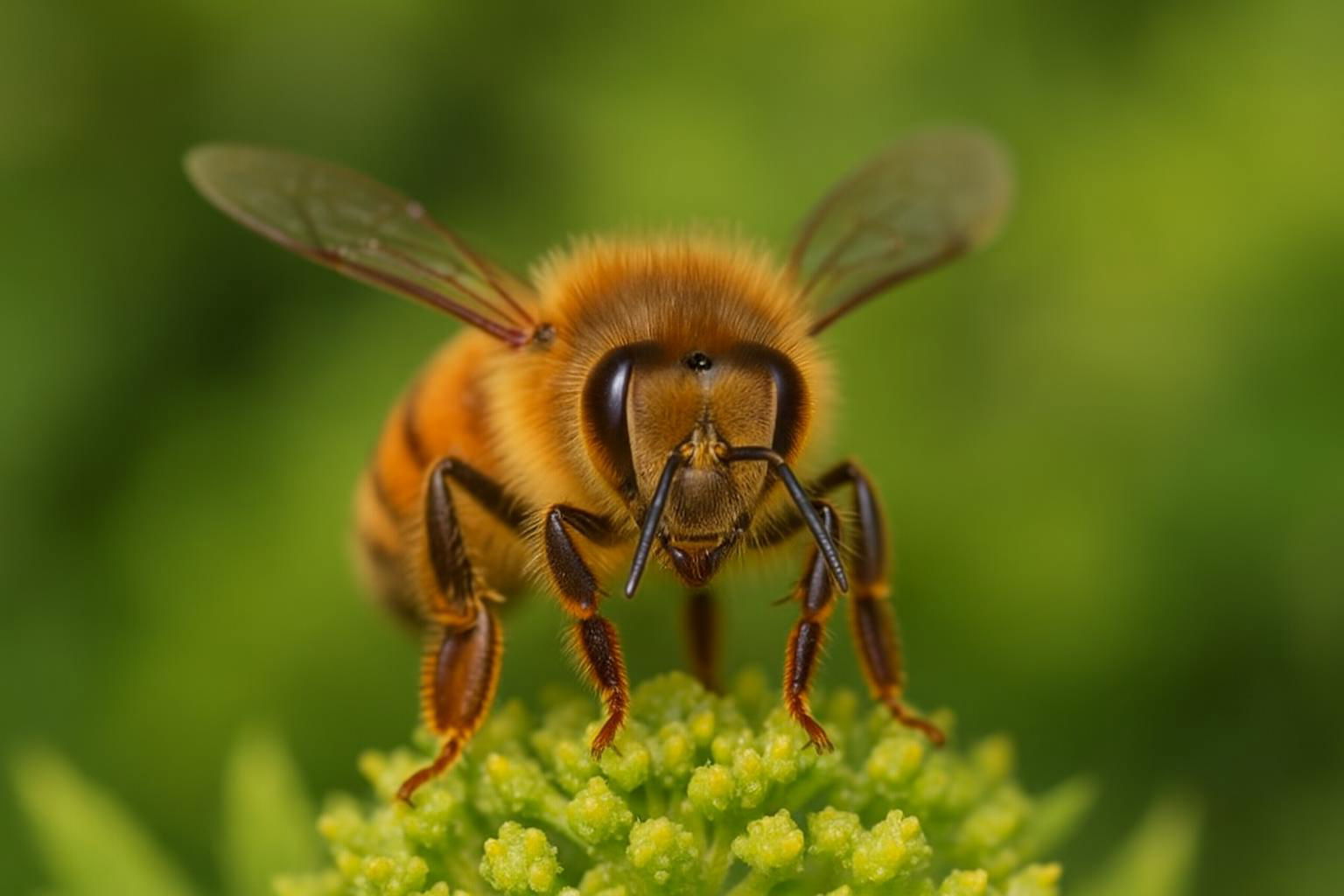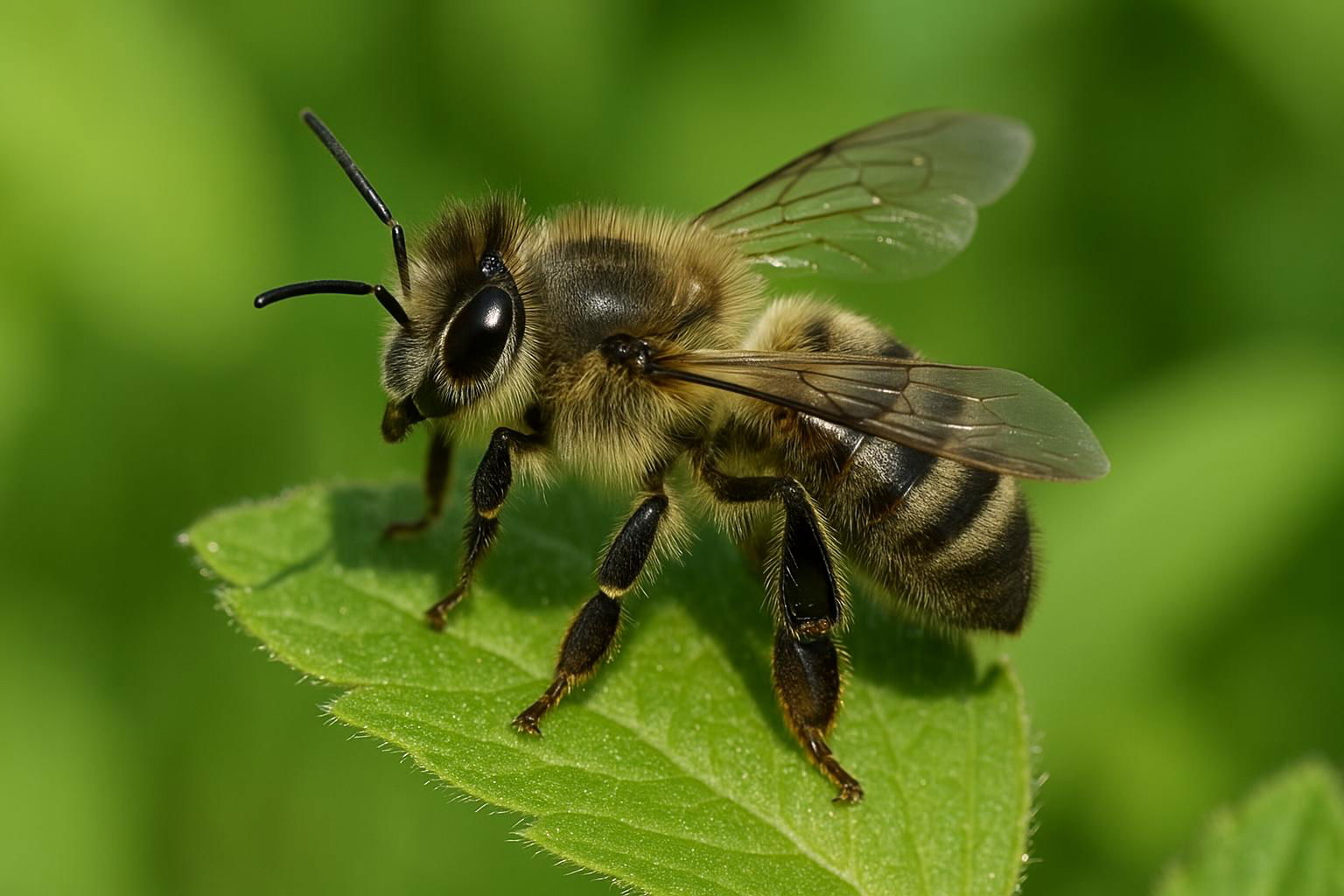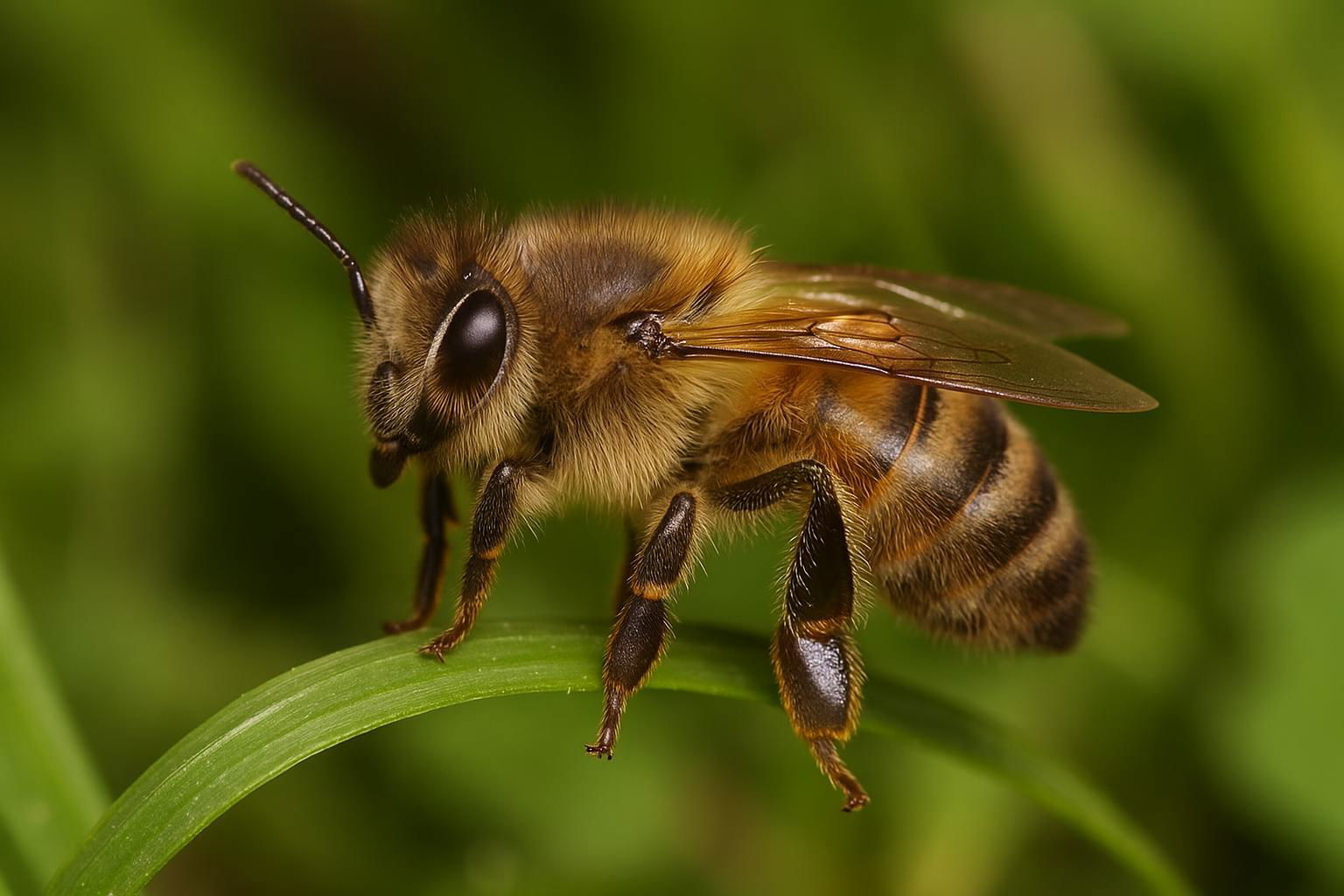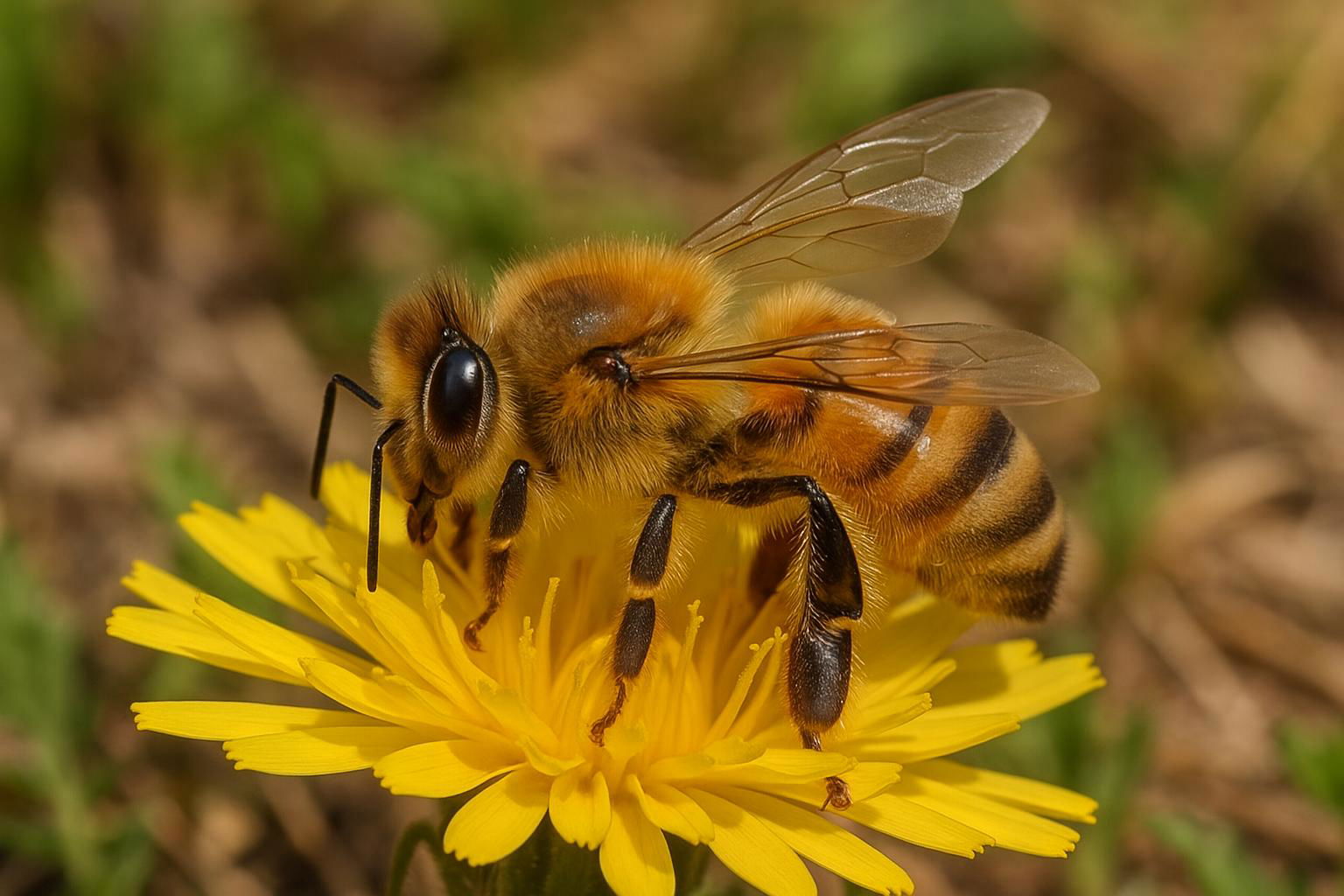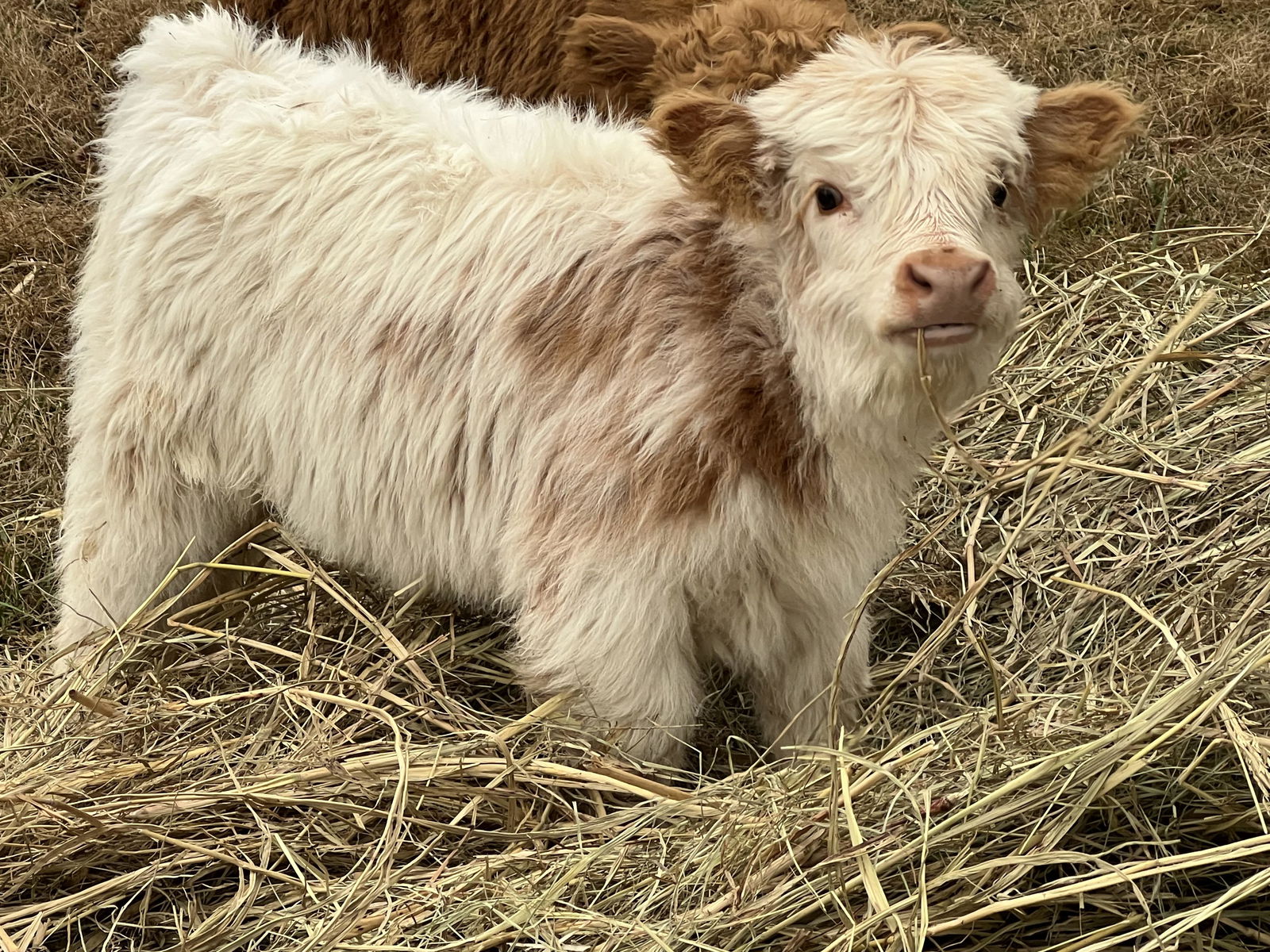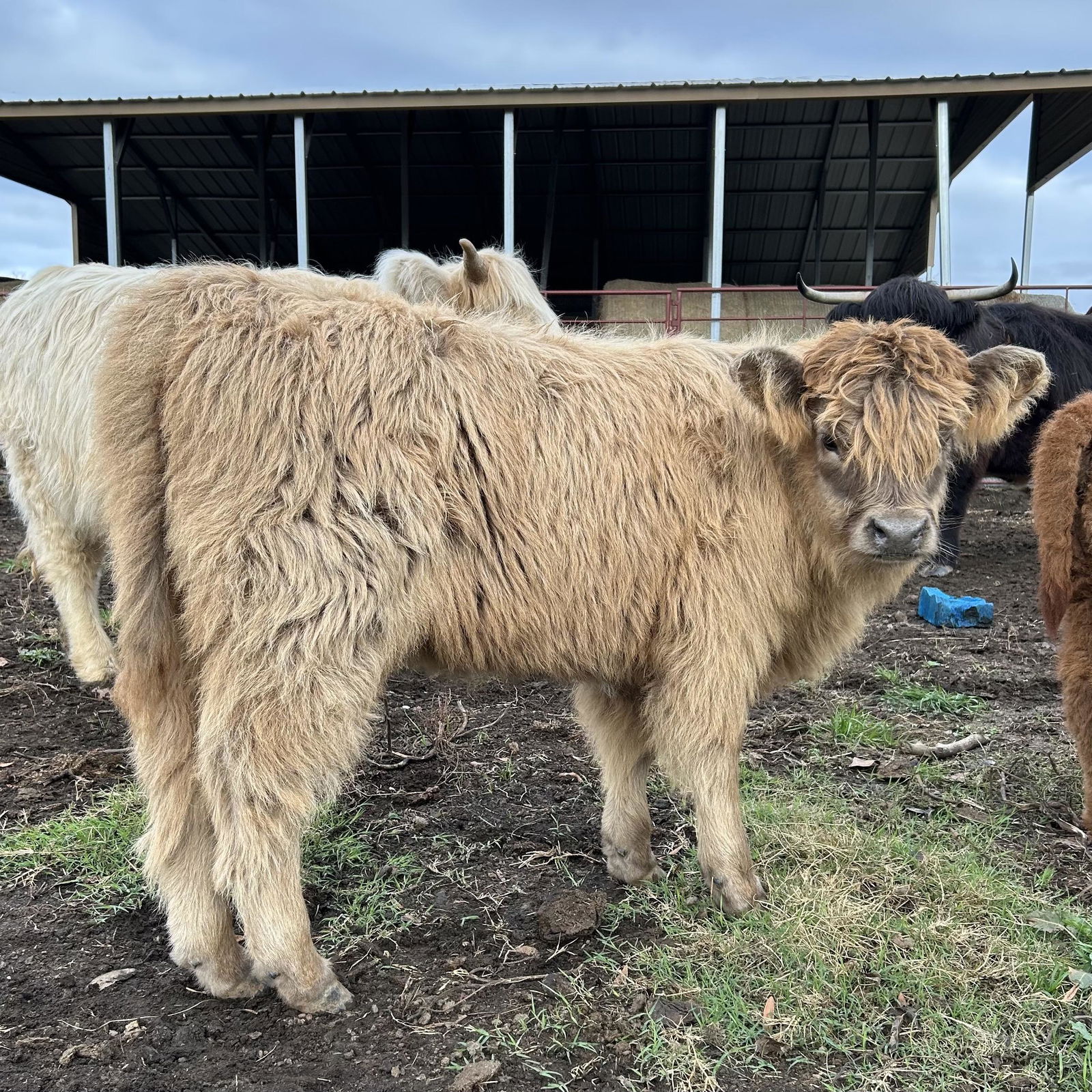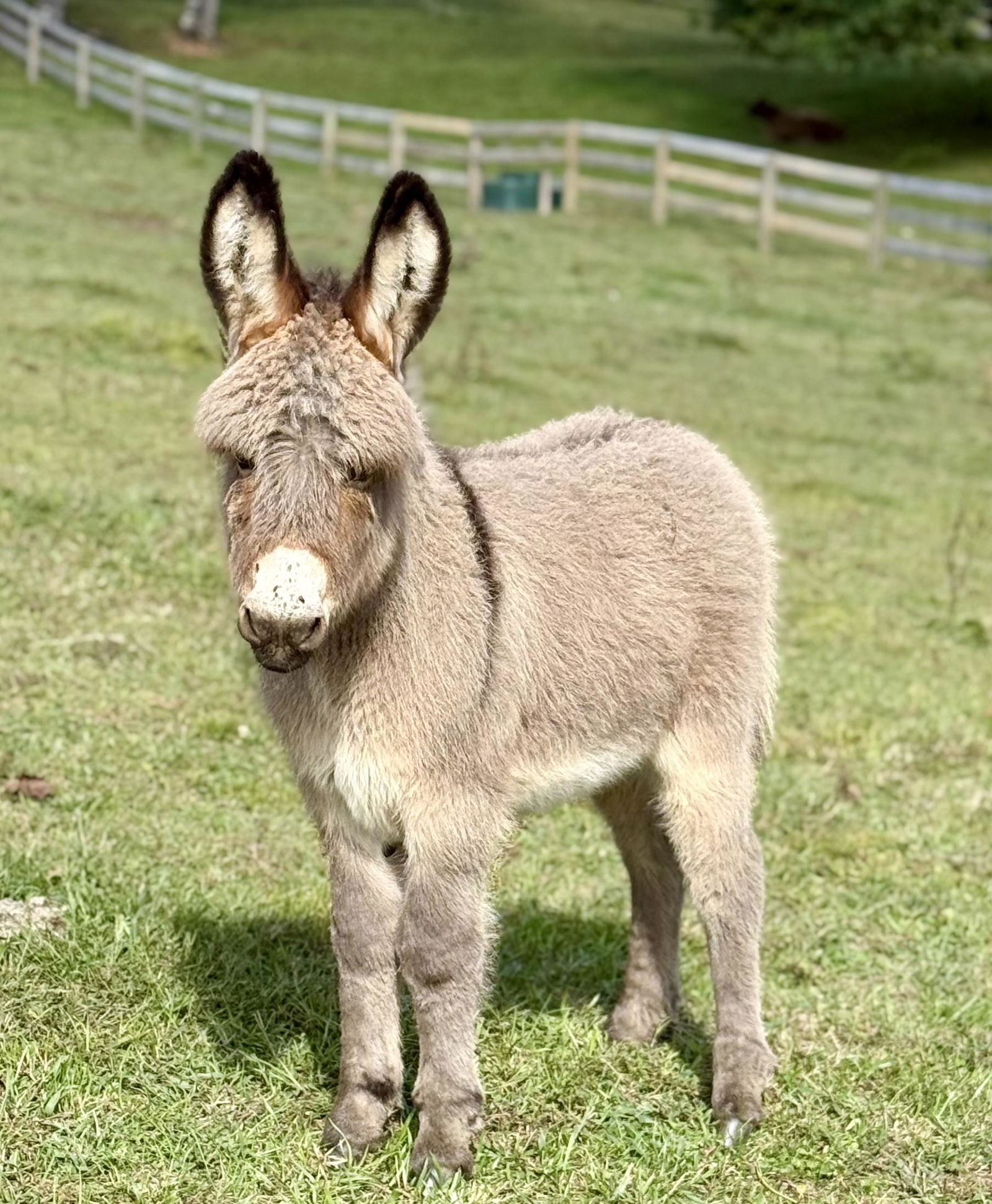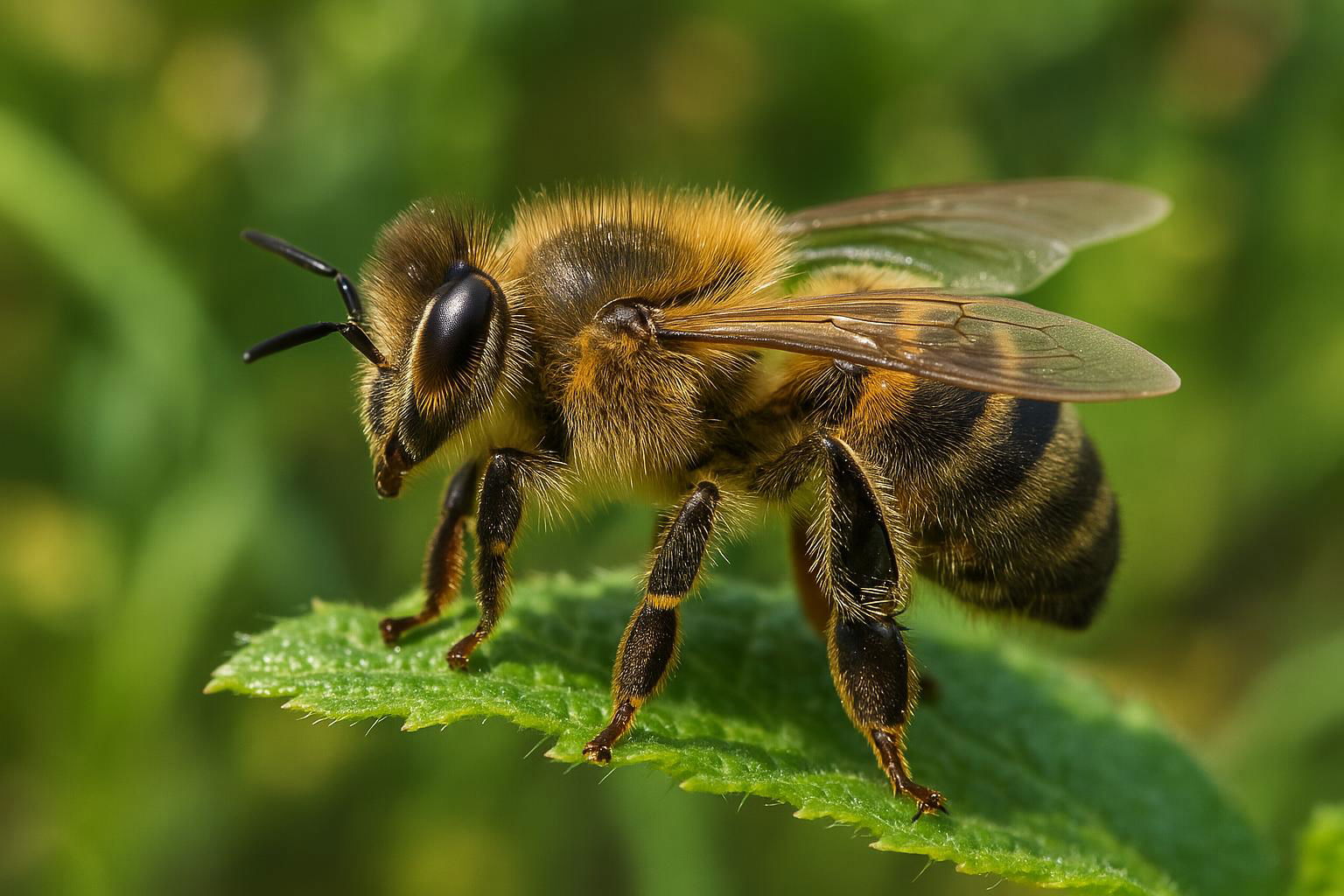
European Honey Bee
Apis mellifera
The European Honey Bee, scientifically known as Apis mellifera, is a vital pollinator native to Europe, Asia, and parts of Africa, but it has also been introduced to other parts of the world due to its crucial role in pollination and honey production. These bees are social insects and live in well-organized colonies that can range from 20,000 to 80,000 individuals, with distinct roles such as queens, workers, and drones. The queen is the sole egg-layer and can lay thousands of eggs during her lifespan, which supports the colony's growth. Worker bees, all infertile females, handle various tasks, including foraging for nectar and pollen, producing honey, and maintaining the hive's cleanliness and security.
The body of the European Honey Bee is characterized by its distinctive yellow and black banding, hairy bodies that help with pollen collection, and specialized structures like the proboscis for extracting nectar and hind legs adapted for carrying pollen. A remarkable communication system known as the "waggle dance" allows foragers to convey the location of food sources to their hive mates, showcasing their complex social behavior and communication skills.
European Honey Bees are not only critical for agriculture due to their role in pollinating a vast array of crops and wild plants, but they are also admired for their production of honey, beeswax, and other byproducts, which have significant economic and ecological importance. However, challenges like habitat loss, pesticides, diseases, and parasites such as the Varroa mite pose threats to their populations worldwide, highlighting the need for conservation efforts to protect these invaluable insects.

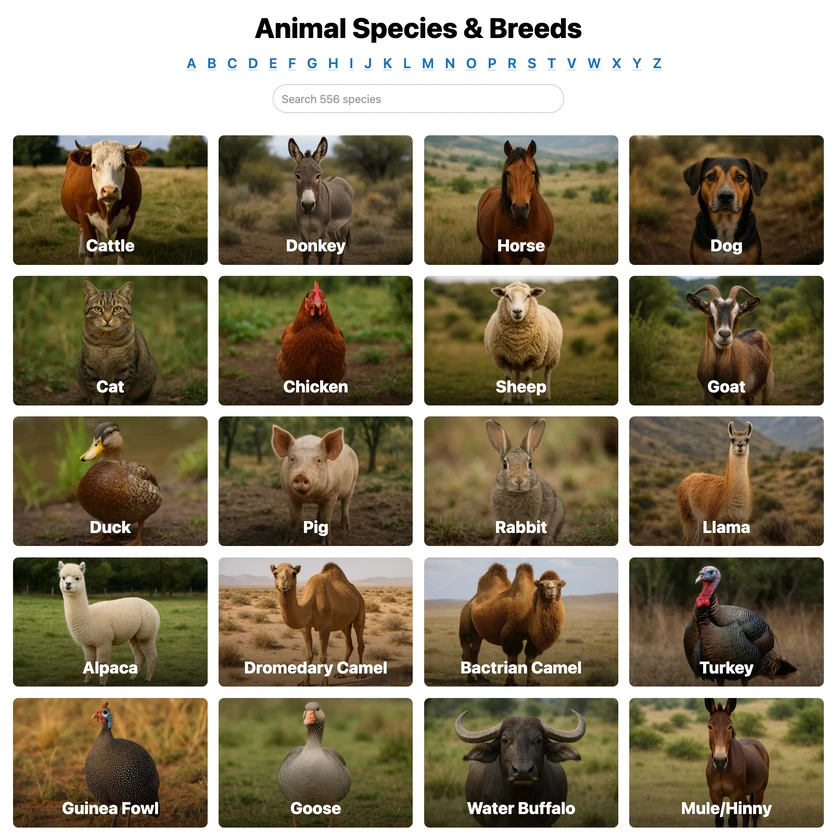 All Species & Breeds
All Species & Breeds
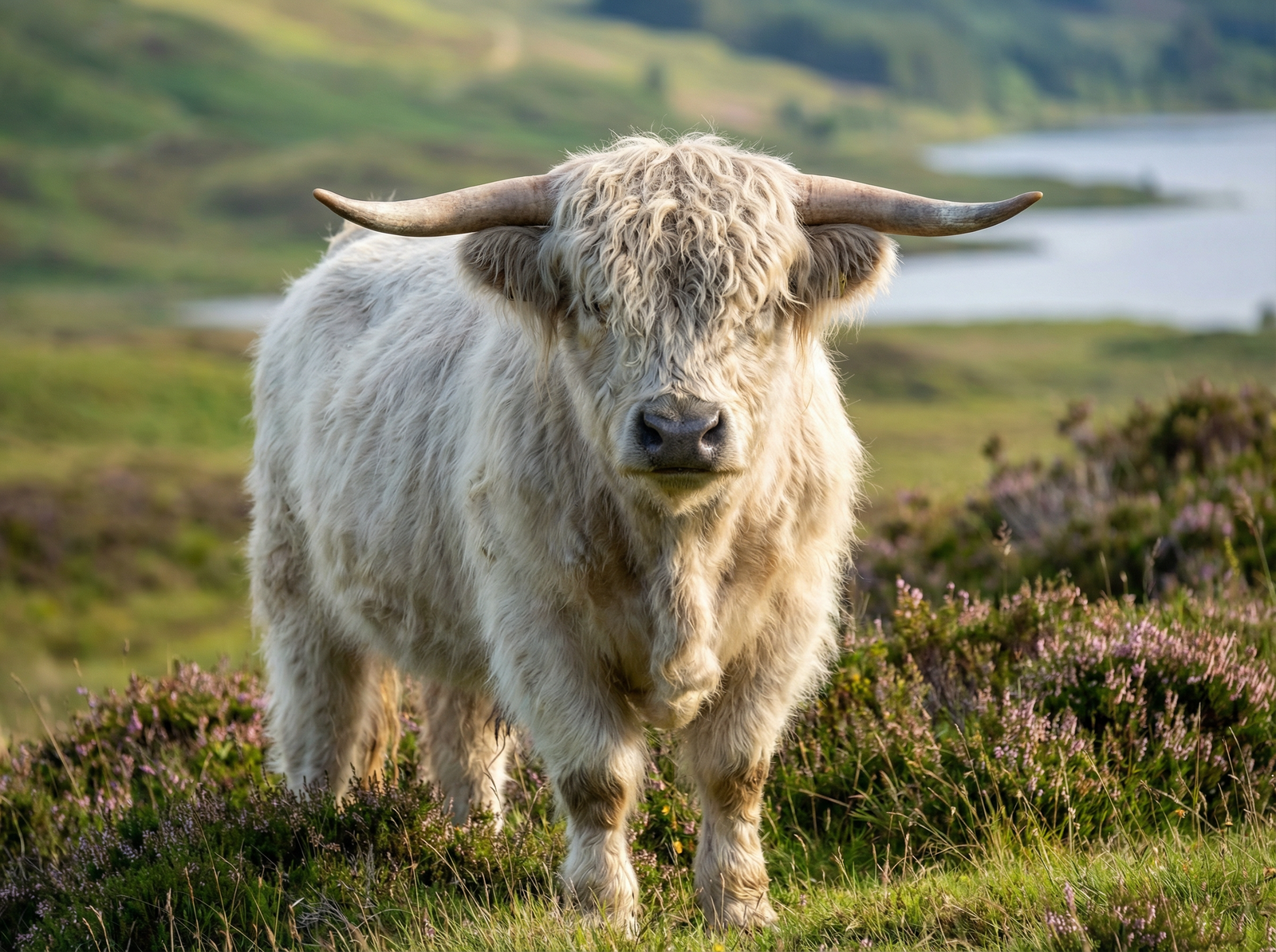 Highland Cattle
Highland Cattle
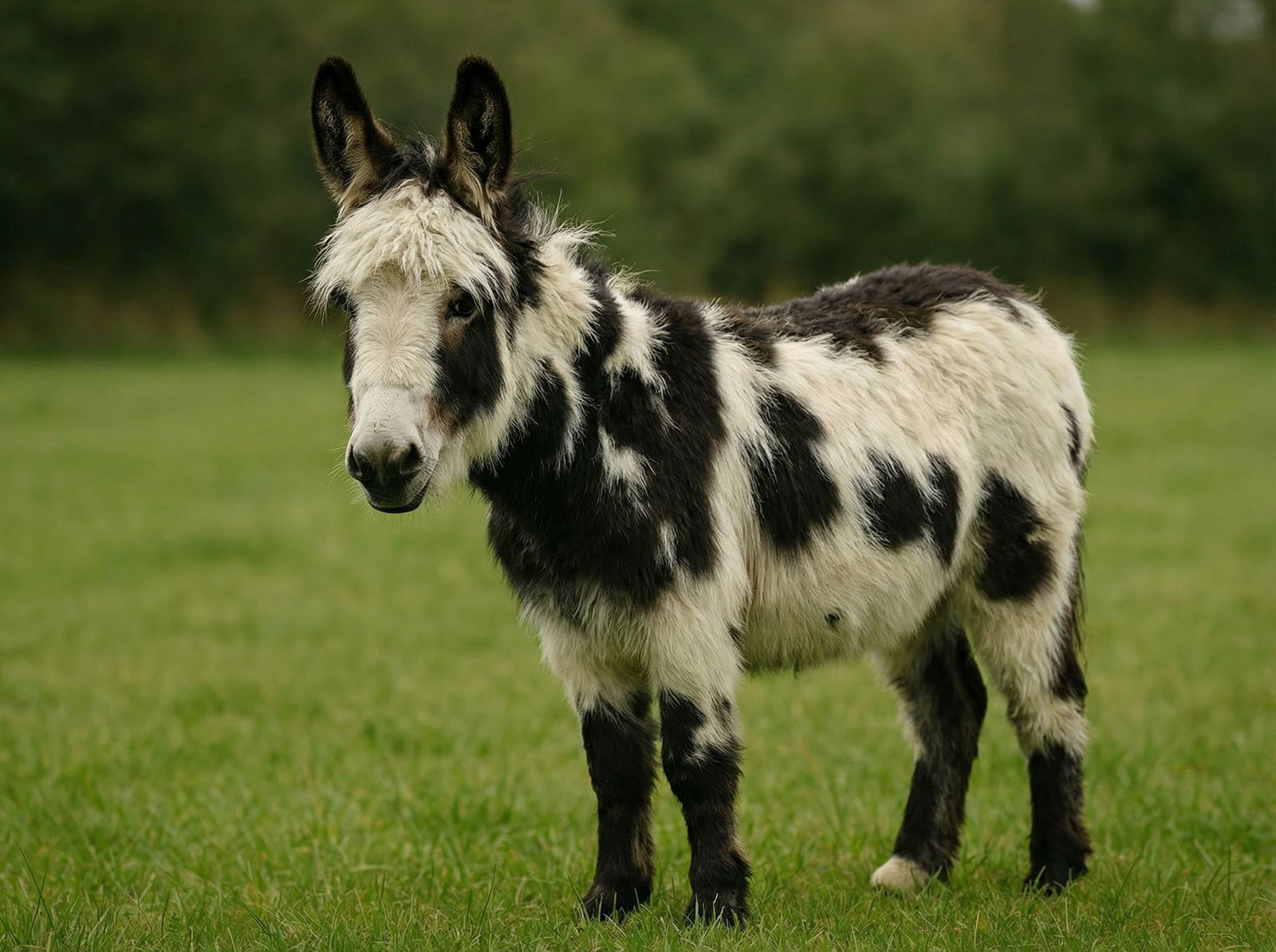 Miniature Donkeys
Miniature Donkeys
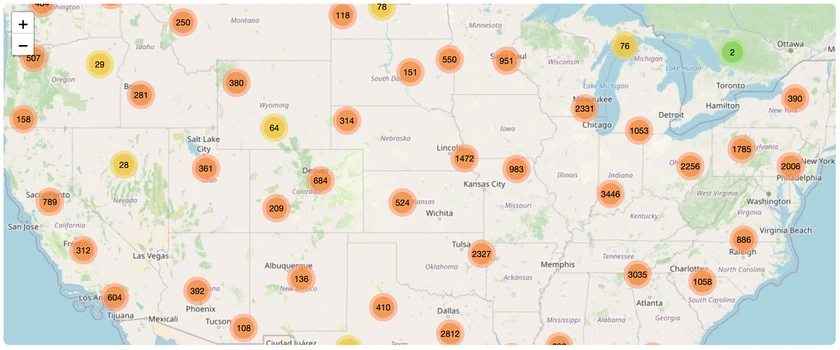 All Species Directory
All Species Directory
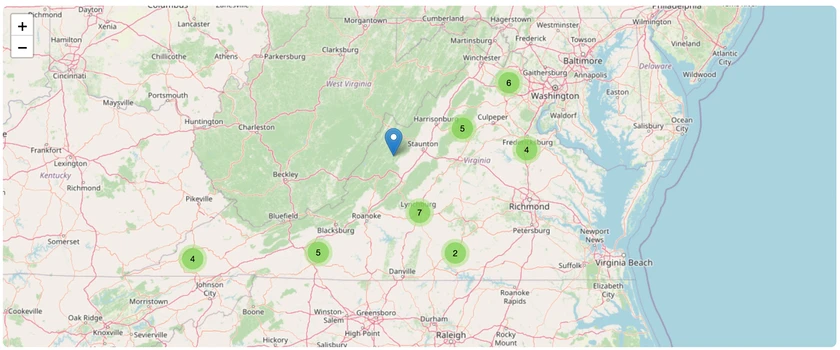 Highland Cattle in Virginia
Highland Cattle in Virginia
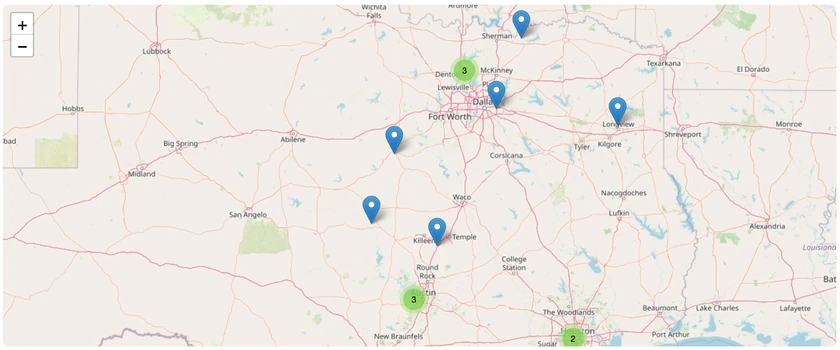 Miniature Donkeys in Texas
Miniature Donkeys in Texas
